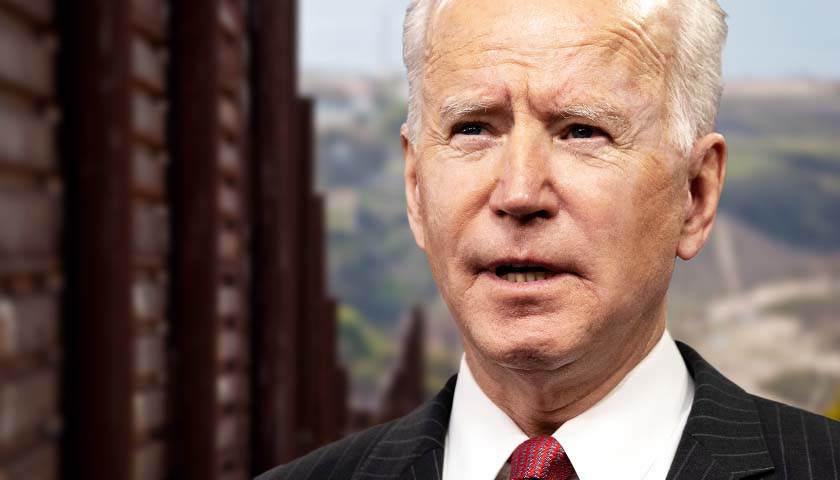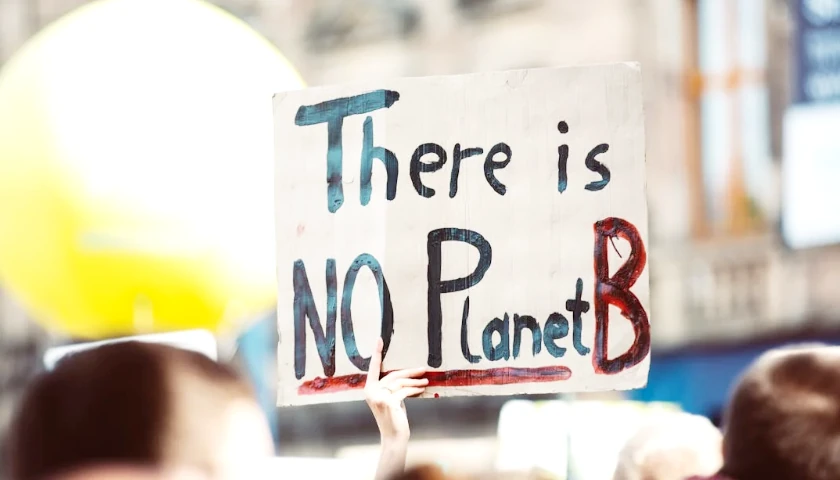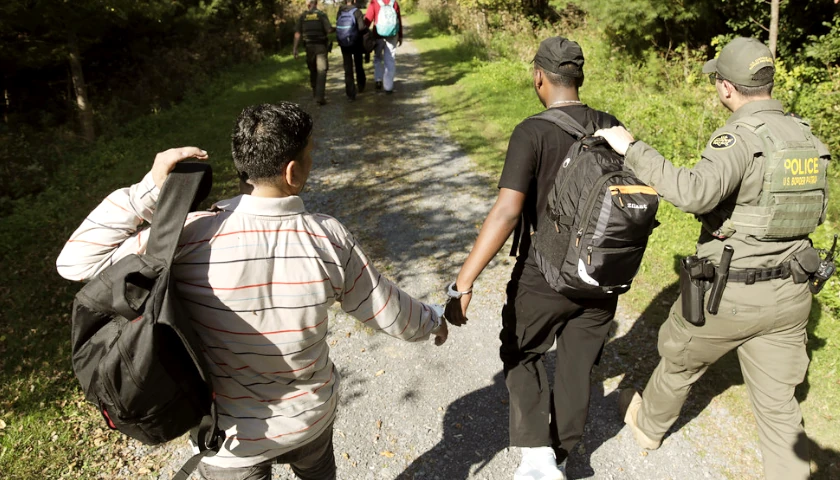by James Varney
While a federal court has stayed the Biden administration’s attempt to lift pandemic-prompted restrictions on immigrants pouring across the southern border, that is just one setback in a largely successful push by the president to make it easier for migrants to enter, live, and work in the U.S.
Since Joe Biden’s first day in office, when he signed seven executive orders on immigration that, among other things, suspended deportations and ended the Trump administration’s “Remain in Mexico” program that had eased the crush of those awaiting asylum hearings, the president has in word and deed sent signals that migrants have interpreted as welcoming. The initiatives include reviving the Obama-era policy known as “catch and release,” “paroling” illegal border crossers so they can enter the country, resettling migrants through secret flights around the country, and ending the “no match” policy that had helped the government identify people who were using fraudulent credentials to find work.
At the same time, the administration has deflected responsibility for the surge of immigrants. Initially, Biden’s team claimed there was no significant spike in immigration, later attributing it to “cyclical” and seasonal trends. Even as a record number of migrants from around the world were streaming across the border, White House Press Secretary Jen Psaki declared last year that “the border remains closed.” Last week, Secretary of Homeland Security Alejandro Mayorkas said the administration had “effectively managed” the border crisis while also blaming “a broken and dismantled system” the administration had inherited.
Many people on the front lines of the border – where a record 1.9 million people were apprehended during fiscal 2021, hundreds of thousands of whom were then released into the county – say the Biden administration’s policies have exacerbated the surge.
“We’re stopping nobody coming into our country,” said Clint McDonald, the executive director of the Texas/Southwestern Texas Border Sheriffs’ Coalition, “and we have no idea who is in our country.”
McDonald and other critics blame what they see as an ideological crusade by Biden officials to dissolve or ignore various laws and regulations that once checked or limited the influx of illegal immigrants – whom the administration now refers to as “irregular migrants.”
“We don’t know how else to put it,” said Spencer Raley, the director of research for the Federation for American Immigration Reform, which favors curbs on illegal immigration. “Since the day he took office, Biden has not signed a policy that would enhance border security. Instead, everything that has been put into place was designed not just to undo policies of the Trump administration but to reflect an unending desire to bring more and more people into our country.”
Biden’s presidential campaign was perhaps more transparent about his intentions than the official line since his inauguration. At several points in 2020, the campaign signaled that enforcement of the U.S. border would be significantly relaxed and opportunities for amnesty expanded. Criticism of the Trump administration’s allegedly harsh border policies were a staple of Biden and his fellow Democratic Party candidates throughout that election year.
Within hours of taking office Biden began to make good on his signals, moving aggressively against the existing infrastructure that dealt with illegal immigration at the southern border. In addition to temporarily suspending deportations and ending the “Remain in Mexico” program, he issued an executive order stopping work on Trump’s border wall. Policy memos from the Homeland Security also gave Border and Customs Protection and ICE agents more latitude in how they handle people encountered crossing the southern border without papers. These policy directives effectively ended ICE’s usual practice of taking custody of immigrants released from local or state jails, and placed more restrictions on the ability of federal authorities to arrest illegal immigrants.
During Trump’s last three months in office, apprehensions along the southern border held steady at an average of 75,000. In the first two months of Biden’s tenure, that number shot up by 120%, reaching a peak of 213,593 last July.
Despite those sharp increases, the Biden administration continued its relaxed border policies. Agreements the Trump administration had reached with Mexico and Central American countries, known as Asylum Cooperative Agreements, which were designed to constrict the flow of immigrants, were scrubbed so that immigrants no longer needed to request asylum in the first country they enter after leaving home.
The administration also reinstituted an Obama-era policy known as “catch and release.” It moved in the opposite direction of the Trump administration by lifting travel bans on some countries – bans upheld by the Supreme Court. Biden’s team has also expanded the list of countries whose residents can be granted “Temporary Protected Status” – which prohibits deportation because those countries are deemed unsafe – and extended the safe harbor period for residents of nine covered countries. The Pew Research Center estimated last year that at least 700,000 immigrants from 12 countries were covered by the program, including Haiti, El Salvador, Venezuela, and Yemen.
The Biden administration has once again expanded the ability of Border Patrol and ICE agents to grant illegal immigrants what is known as “parole.” Although the law granting this power is specific – it allows the government to temporarily admit people on a “case-by-case basis for urgent humanitarian or medical reasons” – various administrations have interpreted the law differently. The Biden administration has reversed Trump’s strict interpretation of that language, reverting to the policy in place under President Obama that allows much wider discretion for granting of “parole” to accept hundreds of thousands of migrants.
Some states have challenged the Biden administration’s expansion of parole, although those cases are still being litigated.
In yet another policy change that facilitates illegal immigration, the Social Security Administration quietly announced on its website last May that it would cease to issue what are known as “no-match” letters, which informed employers of discrepancies between its records and information provided by employees. Critics of the system said it targeted immigrants and claimed the letters were often sent in error. The SSA reportedly sent 791,000 no-match letters in 2020.
The Biden administration has even further euphemized liberals’ use of language regarding immigration. Advocates of more open border policies long preferred “undocumented aliens” to “illegal immigrants,” but now even that has been abandoned for the new phrase, “irregular migrants.”
RealClearInvestigations reached out to the Department of Homeland Security, its subordinate organizations of Customs and Border Protection and ICE, and the SSA for comment on the overall impact of Biden administration policies, but did not receive a response. An ICE spokesperson responded that it would defer to CBP, which did not respond.
Most recently, the Biden administration insisted on ending Title 42, a clause from a 1944 public health law the Trump administration had used to limit illegal immigration during the COVID pandemic. Experts predicted its removal would lead to a tsunami of more illegal immigrants, and at least 10 congressional Democrats, including those up for reelection this year such as Georgia Sen. Raphael Warnock, have voiced reservations about lifting it.
When pressed last month on the reasoning behind the plan to do away with Title 42, White House spokesperson Vedant Patel said: “As always is the case, this administration is working every day to provide relief to immigrants, restore order, fairness and humanity to our immigration system and bring it into the 21st century.”
Critics such as Raley of the Federation for American Immigration Reform say such language shows that Biden’s team sees the issue from the perspective of migrants rather than that of American citizens. “They’re changing the terms because they want to conflate illegal immigrants at the southern border with legal immigration,” he said.
Although there have been rumblings that Republicans might move to impeach Mayorkas if they regain the House next year, most of the pushback to the administration’s immigration policies has come from the states. Various lawsuits filed by Texas, Louisiana, Ohio, Arizona, Alabama, and Montana have sought to check ICE’s refusal to take custody of immigrants released from prison, and another suit this week seeks to block the administration’s plan to give asylum granting powers to U.S. Citizenship and Immigration Services employees rather than immigration court judges.
The administration claims the new rule would “streamline” the process and help unclog a huge backlog in immigration court of nearly 1.7 million cases, according to a recent study by a team at Syracuse University.
Lawyers for the state of Texas contend, however, that the rule violated the Administrative Procedures Act and unduly shifts power from immigration courts to UCIS workers. Their lawsuit argues that the proposed rule “upends the entire adjudicatory system to the benefit of aliens,” the lawsuit said.
In some instances, most recently with the effort to lift Title 42, the Biden administration has been rebuffed in court – as it was last year, when a federal appeals court rejected its effort to end the “Remain in Mexico” policy. The Supreme Court heard arguments on that case last month.
The impact of the administration’s policies is clear to would-be migrants around the world, Sheriffs’ Coalition leader McDonald said. “There is a widespread idea among them that the border is open,” he told RCI. “Last week, illegal immigrants on the Rio Grande wanted to take pictures with sheriff’s deputies they encountered. They were FaceTiming people back in their home countries shouting, ‘We’re here! You can come!’ They know our government is not going to do anything about it.”
McDonald spent 21 years as sheriff of Terrell County, Texas, and when he first won his badge he said that perhaps two corpses a year would be found along the border. Last year it was 22. “It’s just unreal,” McDonald said. “Some of these small counties can’t even cover their morgue bills anymore.”
– – –
James Varney reports for RealClearInvestigations.
Photo “Joe Biden” by U.S. Secretary of Defense. CC BY 2.0. Background Photo “Border Fence” by U.S. Customs and Border Protection.





